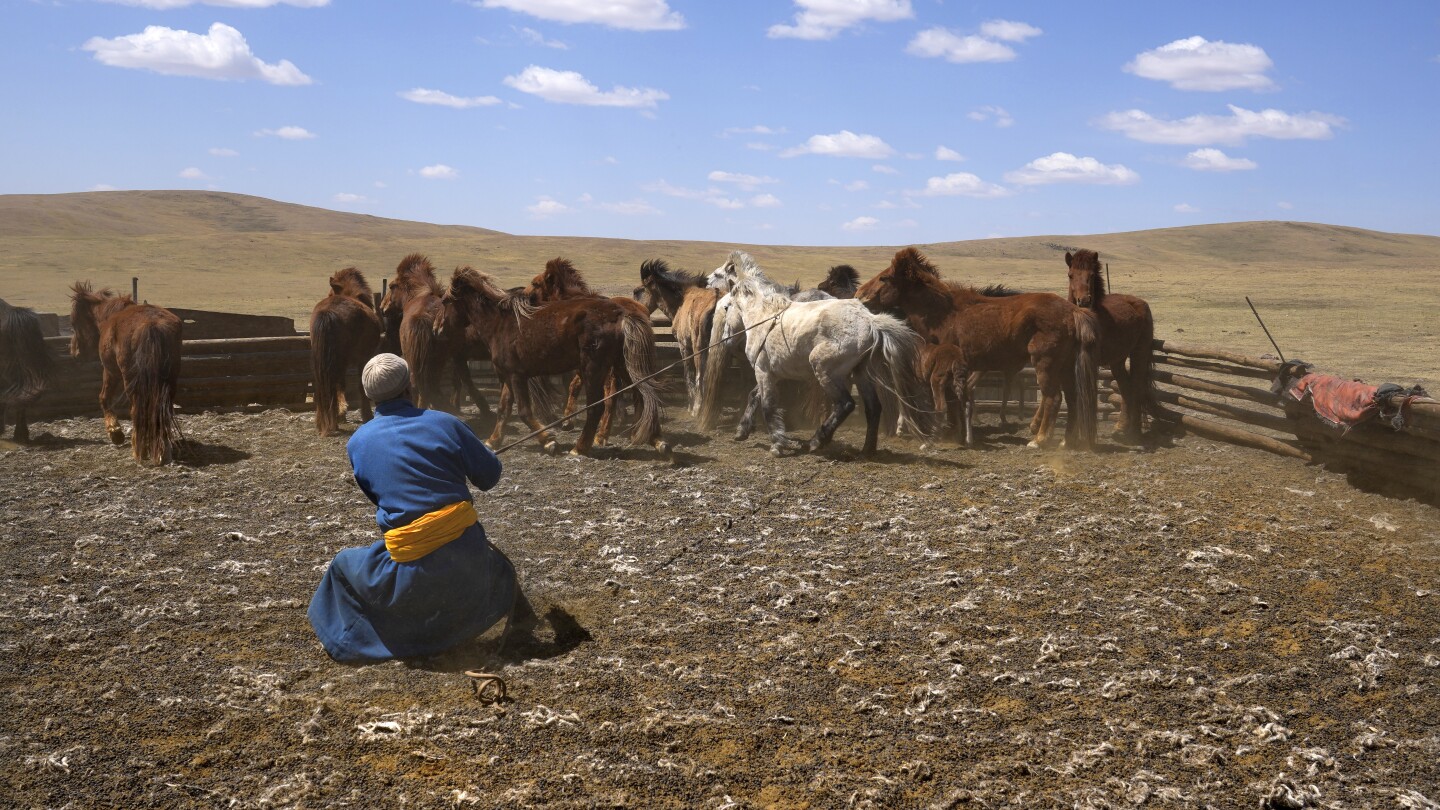SUKHBAATAR, Mongolia (AP) — For millennia, herders in Mongolia and their animals have lived and died together in the country’s vast grasslands, slowly shaping one of the last uninterrupted ecosystems of its kind.
And at first glance, everything appears the way it may have looked all those years back.
A herder watches attentively as a horse gave birth on a cold spring morning. Families look for pastures for their animals to graze. Gers — traditional insulated tents made with wooden frames — still face east and the rising sun, as they have for nomads since the days of Genghis Khan.
But climate change is altering everything: Since 1940, the country’s government says, average temperatures have risen 2.2 degrees Celsius (nearly 4 degrees Fahrenheit). With the increase comes the threat of pastures being eaten away by an encroaching desert and water sources drying out. And dzuds — natural disasters unique to Mongolia caused by droughts and severe, snowy winters — have grown harsher and more frequent.
“We need more rain,” said Lkhaebum, who like other Mongolians uses only his given name and has been herding for decades.
Lkhaebum and other nomads of Mongolia have adapted, once again, adding new technologies to their arsenal of traditional knowledge to negotiate an increasingly unreliable climate. Motorbikes mean they can zip through dust storms to look for lost sheep. Solar energy means they can keep their phones charged and access the internet to exchange information with neighbors about newer pastures, and keep their freezers going to preserve meat for lean days.
The ability to deal with climate change will also impact those who live in cities, including the capital, Ulaanbaatar. The 1.6 million people of the city constitute nearly half of the country’s population, and more people are moving in every day. Construction is booming to provide housing, skyscrapers dot the skyline, and roads are snarled with large cars.
And every day, trucks arrive in urban markets with animals raised in the countryside to feed city inhabitants.
Sukhbaatar Square, where protesters had rallied in 1990 to demand freedom from a weakening Soviet Union, now has young boys playing basketball in the evening. Many don’t see a future in herding, but they admit the importance that nomads and their animals have in their culture.
___
EDITORS’ NOTE — This story is part of The Protein Problem, an AP series that examines the question: Can we feed this growing world without starving the planet? To see the full project, visit https://projects.apnews.com/features/2023/the-protein-problem/index.html

